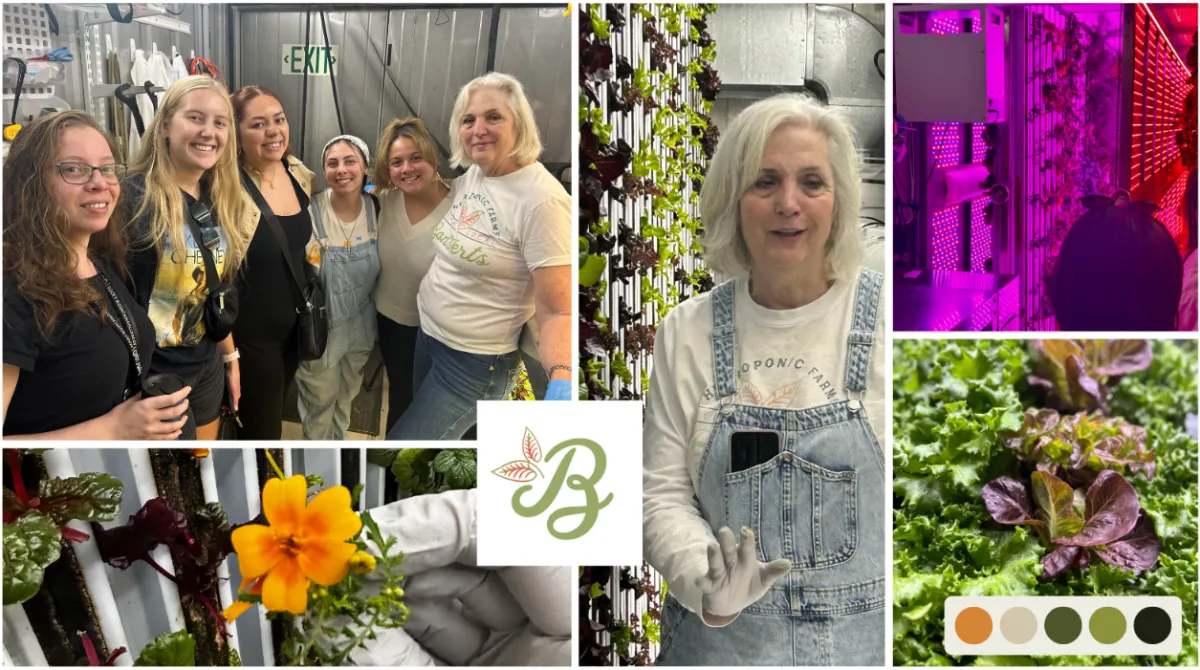
Sustainable Interior Design Students - Down on the Farm!
Sustainable Interior Design Students - Down on the Farm!

What does hydroponic farming have to do with interior design? Well, in our program at RMCAD, sustainability is at the core of everything we do, and hydroponic farming is an incredible sustainable solution to grow food locally year-round. This week, our students dove into the WELL Building Standard, a performance-based certification program aimed at creating healthier environments for building occupants. One of the categories in the WELL program is nourishment, and I wanted the students to experience how hydroponic farming works so they could incorporate this knowledge into future designs—especially for clients who care about sustainability and climate change.
We visited Bonvert Farms, a sustainable farm housed in a small shipping container owned by my friend Anne Espenan. The farm is located in the industrial section of Commerce City, a designated food desert where residents have limited access to fresh fruits and vegetables. Anne specifically chose this location to make a difference, and our visit was packed with insight and inspiration.
Here are some of the key things we learned from Anne:
Every day is a perfect day on the farm!
Anne’s shipping container is a highly controlled environment designed to maximize plant growth. Fitting the seven of us inside was a bit of a squeeze, but once inside, we saw how the temperature and humidity are regulated to create the perfect climate for growing. LED light panels are sandwiched between rows of plants, with color temperatures carefully selected to mimic both daylight and sunlight. This provides the plants with the ideal light spectrum for photosynthesis and growth, regardless of the time of day.
What’s even more fascinating is that inside the farm, day is night and night is day. Anne flips the schedule for energy efficiency, using the LED lights to heat the shipping container during the cooler nighttime hours. This not only reduces energy costs but also keeps the farm operating in a sustainable, climate-controlled way.
Freshness like you've never tasted before:
If you're used to buying produce at the grocery store, you’re in for a surprise with hydroponically grown food. Anne explained that the produce at your local store has likely been in transit, in storage, or sitting on a shelf for two to three weeks before it reaches your kitchen. That’s why those strawberries often go bad just days (or hours!) after you buy them. Hydroponically grown produce is not only fresher but also packed with more nutrients, making it both tastier and healthier.
Sustainability at its finest.
Anne showed us how the plants are grown in vertical channels, with a drip irrigation system that recycles water through the system multiple times. When it’s time to change the water, the remaining nutrient-rich solution is shared with local farmers for use on traditional crops. Even the smallest details of the farm’s waste management system are sustainable—fallen greens are collected for local chickens, and wilted leaves are composted. Nothing goes to waste.
Bringing hydroponic farming home.
At the end of our visit, Anne shared some home systems for hydroponic farming, like the Gardyn system I’m planning to try out in my new, more walkable and sustainable townhouse. I don’t have much of a green thumb (or any real knowledge about plants), but this system comes with lights, cameras, and an app that walks you through every step. I’m eager to see just how foolproof this setup really is—wish me luck!
Hydroponic farming is the future!
Back in class, we discussed the importance of integrating hydroponic systems into the spaces we design. Whether it’s installing them in high school cafeterias, senior centers, restaurants, grocery stores, or residential homes, the possibilities are endless. Hydroponic farming isn’t just a solution for food deserts; it’s a sustainable future for everyone.